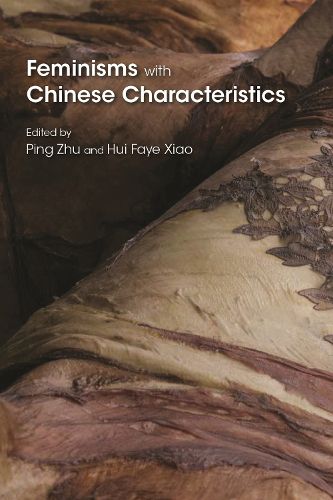Readings Newsletter
Become a Readings Member to make your shopping experience even easier.
Sign in or sign up for free!
You’re not far away from qualifying for FREE standard shipping within Australia
You’ve qualified for FREE standard shipping within Australia
The cart is loading…






The year 1995, when the Fourth World Conference on Women was held in Beijing, marks a historical milestone in the development of the Chinese feminist movement. In the decades that followed, three distinct trends emerged: first, there was a rise in feminist NGOs in mainland China and a surfacing of LGBTQ movements; second, social and economic developments nurtured new female agency, creating a vibrant, women-oriented cultural milieu in China; third, in response to ethnocentric Western feminism, some Chinese feminist scholars and activists recuperated the legacies of socialist China’s state feminism and gender policies in a new millennium. These trends have brought Chinese women unprecedented choices, resources, opportunities, pitfalls, challenges, and even crises.
In this timely volume, Zhu and Xiao offer an examination of the ways in which Chinese feminist ideas have developed since the mid-1990s. By juxtaposing the plural
feminisms
with
Chinese characteristics,
they both underline the importance of integrating Chinese culture, history, and tradition in the discussions of Chinese feminisms, and, stress the difference between the plethora of contemporary Chinese feminisms and the singular state feminism.
The twelve chapters in this interdisciplinary collection address the theme of feminisms with Chinese characteristics from different perspectives rendered from lived experiences, historical reflections, theoretical ruminations, and cultural and sociopolitical critiques, painting a panoramic picture of Chinese feminisms in the age of globalization.
$9.00 standard shipping within Australia
FREE standard shipping within Australia for orders over $100.00
Express & International shipping calculated at checkout
The year 1995, when the Fourth World Conference on Women was held in Beijing, marks a historical milestone in the development of the Chinese feminist movement. In the decades that followed, three distinct trends emerged: first, there was a rise in feminist NGOs in mainland China and a surfacing of LGBTQ movements; second, social and economic developments nurtured new female agency, creating a vibrant, women-oriented cultural milieu in China; third, in response to ethnocentric Western feminism, some Chinese feminist scholars and activists recuperated the legacies of socialist China’s state feminism and gender policies in a new millennium. These trends have brought Chinese women unprecedented choices, resources, opportunities, pitfalls, challenges, and even crises.
In this timely volume, Zhu and Xiao offer an examination of the ways in which Chinese feminist ideas have developed since the mid-1990s. By juxtaposing the plural
feminisms
with
Chinese characteristics,
they both underline the importance of integrating Chinese culture, history, and tradition in the discussions of Chinese feminisms, and, stress the difference between the plethora of contemporary Chinese feminisms and the singular state feminism.
The twelve chapters in this interdisciplinary collection address the theme of feminisms with Chinese characteristics from different perspectives rendered from lived experiences, historical reflections, theoretical ruminations, and cultural and sociopolitical critiques, painting a panoramic picture of Chinese feminisms in the age of globalization.